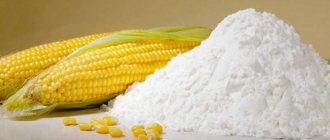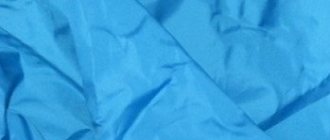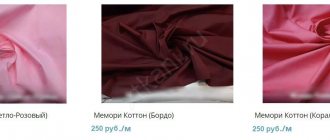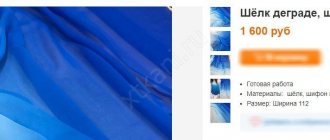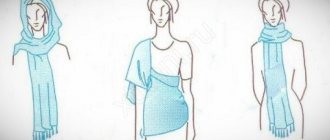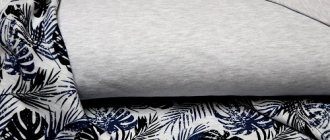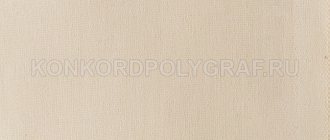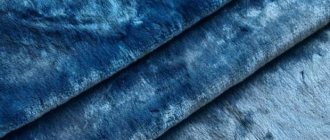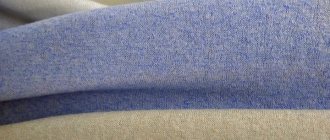Pique belongs to that category of fabrics that almost instantly attract a person’s gaze due to its original structure. This knitwear uses a special weave of threads, which provides a geometric pattern of the correct shape, made in a checkerboard pattern. The pique production technology is designed in such a way that even threads cannot be obtained. Various patterns of regular geometric shapes are one of the main features of pique. But this is only what can be immediately noticed even by a non-professional, since the fabric hides many more pleasant surprises in terms of practical characteristics.
History of creation
Such matter appeared back in the 20s of the last century and almost immediately became popular. It was especially actively used when sewing sportswear. Nowadays, almost any wardrobe item is made from pique: from light jackets to coats. This is due to the high level of quality and very practical characteristics of the fabric.
For the first time, they began to sew sportswear from pique thanks to the idea of the famous tennis player of that time, Rene Lacoste. Before that period, flannel was used to make most sportswear. But it was uncomfortable, often hindered movement and prevented me from feeling free.
For the first time, a pique shirt was demonstrated in public at a tournament with the participation of the same Lacoste. She made a great impression on the audience. After this incident, the fabric was often called lacoste, like the famous polo shirts, which are made from this material. Thus, do not confuse these concepts as if they are different fabrics, since they mean the same thing.
At the moment, although shirts are the most famous product, manufacturers also produce clothing for official events and uniforms made from this material.
General overview
Pique fabric is a dense knitted fabric with a complex weave that forms a waffle-like pattern on the surface. Threads in several layers are superimposed on each other, forming pores for the free penetration of air. Pique belongs to the category of double-knit fabrics that have a thin top and a stiff back. The structure of the canvas is noticeable only on the front side and can be in the form of rhombuses, honeycombs, squares, but rarely stripes. There is also pique with scars of different thicknesses.
The original texture creates an attractive look. Externally, the fabric resembles a stitched canvas, which is why it has the name “piqué”, which in French means “quilted” or “stitched”.
Due to the density, pique products hold their shape. Some types are woven less tightly and have better stretch. It should be noted that the familiar waffle fabric for towels is also a type of pique.
Historical reference
The material appeared relatively recently, at the beginning of the twentieth century. Its history is connected with the Lacoste sportswear brand, which is why it is sometimes called Lacoste. Tennis player Rene Lacoste was the first to appear at the tournament wearing a new textile polo shirt that did not restrict movement and provided comfort. Interestingly, the athlete himself created such a fabric, which began to bear his name. As you know, before the advent of pique, uniforms for athletes were made from flannel. The fabric quickly gained popularity and was used for the famous polo shirts, with the alligator logo on the patch pocket.
Basic properties
Pique fabric
The high level of demand for pique fabric is explained by its excellent quality characteristics, and not just the popularity of the manufacturer's brand. All the main advantages of complex weaving are embodied here. The material is made in a homogeneous structure, and on its surface a simple geometric pattern or simply an even ornament is made. A wide piece of fabric looks beautiful on its own, even without additional decorations. Pique holds its shape well and is practical, which made it popular in the sports field at one time. Simplicity and good preservation of appearance, colors and other parameters maintain the popularity of the material to this day.
Weaves in different types of fabric may differ from each other in density. This can be a loose structure, which well reflects all the qualities of standard knitwear. However, it does not embody all the advantages inherent in the base material that is used for the same shirts. In the loose type, the matter is stretched to the sides. If dense weaving is used, the material turns out to be very rigid and very different from the previous version.
Care
As we have already said, this matter is not very whimsical. Care instructions may vary for different densities, so please read the product label carefully. The main recommendations are:
- Wash normal, machine wash, using regular washing powder
- For high-density varieties, starching may be recommended
- You need to iron things based on the recommendations on the label.
- The use of gentle stain removers is allowed
- Machine drying possible
Advantages
The advantages of pique include the following qualities:
- good crease resistance, which only increases when synthetic fibers are added to the material (but too many of them can lead to the loss of other beneficial properties);
- excellent wear resistance that lasts throughout the entire wearing period;
- the fabric is hygroscopic, so not only clothes, but also towels are made from it;
- good breathability ensures excellent air exchange and allows the skin to breathe normally under any conditions;
- the fabric does not require complex care, since piqué is an unpretentious material;
- hypoallergenic, making the material suitable for all people, even those with allergies;
- has antibacterial properties, which prevents the proliferation of microorganisms that can cause various diseases and allergies, including fungi and dust mites;
- environmentally friendly material.
Advantages and disadvantages of the material
Pique material has one disadvantage - the high price of the material. The quality characteristics of the fabric are its advantages:
- Flexibility. Natural fabric does not wrinkle.
- Hygroscopicity. The fabric is breathable and perfectly absorbs moisture.
- Strength. The natural-based material can serve for many years.
- Autonomy. If other materials require constant care, Lacoste practically does not need it.
- Reluctance to burn out. Clothes remain bright throughout use.
- Cleanliness and health. If the product consists of 100% natural raw materials, the occurrence of allergic reactions is minimized.
Material composition
Polo Lacoste
In appearance, pique is a fairly dense textured knitwear with a complex structural weave. Common types of fabric have regular geometric patterns. In addition to these, there are even less common fabrics with an airy and loose structure.
The main difficulty of the production technology lies in creating a special weave. The fabric uses two cross and weft warp threads. As a result, it looks like quilting, but in fact, a different type of material creation is used here.
At the very beginning of production, companies made pique only from natural cotton without adding synthetics. But technology began to actively develop, after which synthetics began to appear in the composition. At the moment, the optimal cotton content is considered to be 50%. In budget fabric options, this figure can drop to 30%, but this also affects the quality of the material. This ratio leads to the fact that most benefits are simply canceled.
High-quality materials contain the following types of fibers:
- wool;
- cotton;
- viscose;
- wool mixture;
- nylon;
- silk.
If you add elastane to the fabric, or spandex as it is also called, the material will acquire additional plasticity. Pique with spandex is suitable for sewing tunics, blouses, bodycon dresses and other similar garments. It is hardly used in sportswear, but for more casual looks it works well.
This material is even found in the production of children's clothing. However, the fabrics used here are not those that are produced for sewing sportswear or outerwear. Here they make the so-called baby pique, where there is a small fleece on the wrong side. The main condition for using pique in sewing children's clothing is to contain as much natural cotton as possible in relation to other materials. Otherwise, using the fabric on sensitive baby skin will be unsafe.
Compound
Pique can consist of only natural cotton, as originally intended, or a mixture of cotton and synthetics. The ratio can be 50/50, or in order to reduce the cost of fabric, the natural fiber content is limited to 30-40%. The additives used are nylon, elastane, lycra, polyester, and sometimes viscose or wool.
The 100% cotton material is less durable and expensive, and additives give it wear resistance and elasticity.
Interesting! Lacoste fabric is even made from corn fibers called dextose. The fabric is soft and dries quickly.
Product care
Washing practically does not damage the fabric, since the tight weave does not allow it to stretch. Also, no special care conditions are needed here. Almost all washing recommendations are similar to those given for ordinary knitwear. There are a minimum number of restrictions here.
The basic rules of care include the following points:
- pique can be washed in a regular washing machine using detergents, including synthetic ones;
- For tough types of fabrics, light starching after washing is recommended;
- The ironing mode must be determined by the label of a particular product, since for each of them different types of pique can be used with their own care characteristics;
- if there is a stain left on the clothes that cannot be washed in the usual way, then special stain removers can be used to remove it;
- drying can be either machine or ordinary, but if the product has a loose weave structure, then horizontal drying is recommended.
Based on the above points, as well as in comparison with other types of fabrics, pique looks very unpretentious. This is one of the factors that ensures high popularity for this jersey, and not only in the sports environment.
How to properly care for the material
The tight weave prevents the material from stretching. The fabric is easy to wash and does not require a delicate cycle. It requires the standard care procedures used for all knitwear. Separate recommendations are indicated by clothing manufacturers on the labels, since different types of materials and decorative elements are used in production.
Wash
The fabric is not prone to pilling - it is not afraid of repeated washing. Hand and machine washable. In both options, mild detergents are used - in liquid form or granular washing powder. The main condition when choosing is the absence of aggressive substances and chlorine. Before putting things into the drum of the washing machine, they are fastened and turned inside out. For polo shirts, the corners of the collar are fixed to prevent creases.
If there are stains that are difficult to remove, use bleach. It should also be without aggressive components in its composition. To clean the fibers, a temperature of 40 °C is sufficient. The last rinse is carried out with cold water. Rinse hard and dense items with the addition of conditioner.
To keep things in shape, they are starched. Wring out clothes as usual, without resorting to intensive spinning.
Thanks to the high density, water drains easily - drying occurs faster.
How to dry and iron correctly
Lacoste products are dried naturally or using automated drying. For normal drying, hangers are used. It is better not to hang things with a loose structure, but to lay them out horizontally.
Before ironing, the product is turned inside out. Set the “Cotton” mode. If there are synthetic additives, in order not to spoil the item, the regulator is turned to the “Synthetic” position.
How to choose quality pique products
Large selection of Lacoste polos
Based on the existence of several varieties of pique, there is no unambiguous quality standard here. Each type of clothing may require its own variety, with a softer or coarser texture. But in any case, the main indicator of quality is the composition of the material. The base should be made of natural cotton. Its content must be at least 50%. If there is more of it, the fabric will become softer. It may not hold its shape as well, but it breathes better and absorbs moisture.
The addition of nylon makes the fabric rougher, but significantly increases the practicality of use. This material lasts much longer and is very resistant to tearing. For those types of clothing that are subject to a lot of wear and tear, this can be a great option.
The amount of synthetic indicates how well the material holds its shape. It also makes caring for clothes easier, as it can easily withstand all washing and drying conditions. This is one of the most popular supplements used in peak. It also reduces the cost of the material. Interspersed with wool fibers make the fabric warmer.
Description
Let's look at the photo showing the pique fabric. If you look closely, you can see the effect of stitched fabric. Translated from French, “piqué” just means “quilted” or “stitched.” So the name of this knitwear was given for a reason.
What does matter look like? The complex and dense weave provides the pique material with a characteristic ornament, and, if you look closely, a geometric pattern. This knitwear has a high density and holds its shape well. There are variants of fabric with a weaker weave - they are characterized by the main property of any knitwear - it stretches well in different directions. The description would not be complete without an example - not everyone knows, but the waffle fabric from which towels are made is a type of pique. The price per meter depends on the quality of raw materials and the manufacturing technology of the material, and starts from 600 rubles.
The interesting texture and properties of fine ribbed poplin, you can read more about it in our other article.
Application of pique
The main area of application is sewing polo shirts. But these are far from the only things, and lately the range has grown significantly. Nowadays, formal shirts made from this fabric are very popular and are suitable for formal events. In many modern stores you can find the following clothing items:
- T-shirts;
- shirts;
- sports uniform;
- dresses;
- baby clothes;
- light bedspreads, including insulated ones;
- some types of outerwear in autumn and spring;
- decorative elements for clothing;
- towels, in particular waffle towels;
- cloth napkins;
- tablecloths;
- robes;
- pajamas;
- homewear;
- mattresses of varying degrees of hardness.
Composition and production
Classic pique is a cotton fabric with a small addition of elastane (lycra, spandex) up to 5% or without it.
To make the fabric cheaper, softer and more elastic, others are added to cotton fibers: wool, silk, polyester, nylon, viscose, elastane. All these types of fibers are used in different
ratios and, therefore, the result is a fabric with excellent properties.
Elastane is the most popular additive in pique fabric. With it, pique knitted fabric stretches well, becomes more elastic and durable.
Pique fabric is a knitted fabric obtained as a result of a complex interweaving of threads. The result is a fabric with a smooth back side and a textured front side. The pattern on the fabric can be different: checkerboard, squares, rhombuses, honeycombs, mesh pattern.
Pique turns out to be elastic due to the content of elastane fibers and the porous front side, where the threads are mobile and stretch well. As for the colors of the fabric produced, it can be plain-dyed in any tone, bleached, and with a print applied by silk-screen printing or thermal printing.
Types of fabric
Taking into account the fact that this fabric is very popular among buyers, many manufacturers are trying to introduce various modifications to it that create certain differences. Over the entire period of existence and development of production, several main varieties have been made. The main, so-called traditional varieties of pique include:
- Children's - here we use natural cotton fabric, the base of which is made thicker, and on the wrong side there is a light fleece. It is used both for sewing children's clothing and for light bedspreads. Some types of shirts and sportswear are also made from this variety. As a rule, it has the largest amount of cotton in its composition compared to the others.
- The French, or as it is also called “knitted” variety is considered the most common. It is this type of pique that is used for sewing polo shirts.
- Pique bumazea is a kind of improved version of the children's variety. In contrast, here a denser pile is used on the wrong side. It is used in the production of light outerwear, jackets and other items designed for warm periods.
In addition to variations in type of application and composition, there are also differences in weave density. This parameter also determines the feasibility of sewing a particular type of clothing from fabric. Additionally, the following types of fabric are distinguished:
- variegated;
- plain;
- unbleached.
Types of pique
- Traditional French knitwear for making polo shirts.
- Children's - material made of pure cotton, dense and with a slight fleece on the inside.
- Bumazea is a durable fabric with a thick fleece on the reverse side. Can be used for outerwear.
Pique can be bleached, variegated and plain-dyed.
Distinctive qualities of LACOSTE clothing
It should be noted right away that items with the LACOSTE brand are classified as expensive. Elite knitwear stretches with difficulty in your hands. The clothes have straight stitches and high-quality processing. Production bases are located in Asian countries, as indicated on the tag. The manufacturer sews two labels: with composition and care recommendations. The color of the buttons on a polo shirt is different from the color of the fabric. The “crocodile” is always painted green and sewn on with fishing line.
How to determine if you are really in a dive
There is a truly rich variety of fabrics on the market today, so some of them can easily be confused with real pique. To identify this variety, you should try to pull it. If after such manipulation the material returns to its original state, then it is a dive. In addition, a distinctive feature of the material is the presence of an original waffle pattern, which is due to the unique weaving of the material.
Pique knit fabric is an excellent choice when you want durable, long-lasting clothing with a high level of practicality. Improved strength characteristics here are achieved not just by new expensive materials, but by a unique type of weave. This is a complex weave of warp threads, which has proven its practical benefits for almost a hundred years and does not go out of fashion. The trademark Lacoste polo shirts have been and remain the hallmark of the fabric.
Reviews
Reviews of people who have worn clothes made from this material will tell us what pique fabric is.
Alexey, 34 years old “I am a fan of polo shirts made from this material. I have a lot of them in my wardrobe - in a variety of colors. In general, I believe that polo is universal clothing for men. Since I live alone, a huge plus for me is the ease of maintenance of things made from this fabric - they practically do not require ironing and are easy to wash.”
Oksana, 40 years old “My daughter plays tennis professionally, and her uniform is made only from this jersey. I can't think of anything more comfortable than a Lacoste sports dress. And everyday clothes are pleasant to wear, and caring for them is a pleasure.”
What can replace pique fabric? One of the options for knitwear with natural cotton fibers is interlock foam - a dense eco-friendly material. You can learn more about singing in another article on our website. We regularly update materials, bookmark the site and read them first.
Characteristics
Pique is a type of knitwear widely used for sportswear and casual wear. The fabric has the following properties:
- high strength - the material hardly stretches, does not deform;
- practicality - it is easy to care for pique, while the performance characteristics of the fabric do not suffer;
- breathability – the human body breathes;
- durability - during washing the fabric does not lose its properties and does not shrink;
- color fastness - piqué practically does not fade in the sun.
How to determine that you are in a dive? It’s very simple - this material stretches, but after you release it, it immediately returns to its original shape. It also has a characteristic waffle pattern that is not found in other fabrics.
Application of knitwear
When we hear “pique,” classic polo shirts come to mind, which have long been worn not only on the tennis court, but also at work. But this does not mean that only polos are sewn from pique. The fabric is the basis:
- casual and business clothes (mainly T-shirts and shirts, jackets, blazers);
- tracksuits, dresses for some sports;
- insulated items for an active lifestyle and sports activities in bad weather;
- children's clothing;
- bedspreads, napkins, towels, tablecloths;
- home clothes, dressing gowns, pajamas;
- jackets, raincoats.
The material is also used to make decorative items - pockets, cuffs, collars. They look unusual and hold their shape perfectly.
Application area
The material is usually used for sewing the following products:
- children's knitwear - T-shirts, vests, bodysuits (“little men”);
- sportswear - men's and women's polo shirts, tracksuits, summer dresses;
- home textiles - towels, tablecloths and napkins, rags for wiping furniture and glass;
- underwear - long johns, leggings, pajamas.
This is interesting!
Fashion houses Boglioli and Lardini make classic jackets from pique. Such an unusual use of a fabric familiar to everyone has in some way become the calling card of these brands.
Pique production
The first pique material consisted exclusively of 100% cotton, with the development of technology and the discovery of new fibers, this material began to be made from artificial and natural fabrics.
A distinctive feature of pique is the special weave of fibers; two weft threads take part in the production process. Thus, a combined weave is obtained; the material has a relief pattern, usually of a geometric shape in the form of a square, rhombus, as well as honeycombs and checkers. Currently, many large enterprises around the world are engaged in the production of pique; this material is considered very relevant and in demand. Some of the leaders in the production of pique fabric are Turkey, as well as Italy and China.
Properties
It’s better to find out what kind of pique fabric it is by describing its properties and characteristics.
- Durability and resistance to abrasion and tearing.
- Good breathability and moisture absorption.
- Softness and lightness, which ensures comfortable wearing of pique clothing.
- The elasticity of the material due to the elastane content, which allows you to sew clothes that do not hinder active movements.
- Fabrics with a mixed composition do not shrink, but it is better to soak pique cotton in warm water before cutting the product.
- Pills do not appear on the surface of the fabric even after wearing pique clothing for a long time.
- Easy to care for.
- Easy to sew and process: the material does not fray when cut and does not slip when cutting.
Benefits of fabric
- Hypoallergenic.
- Wrinkle-resistant.
- Eco-friendly.
- Easy to care for.
- Hygroscopic.
An all-cotton pique is a thing that will cause absolutely no worries, but not all people have the financial means to buy such things. Fortunately, there are varieties that contain artificial elements, but this does not spoil the thing itself, and they are cheaper. The advantage of such varieties of pique is its antibacterial properties - thanks to it, the proliferation and spread of mold, various bacteria, and so on does not occur.
